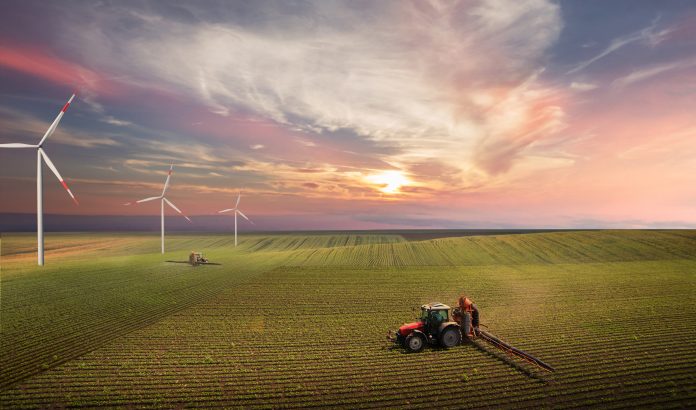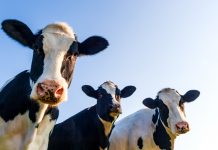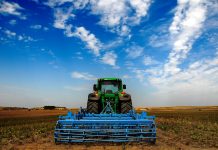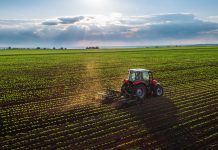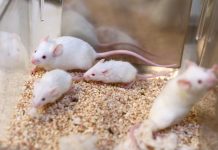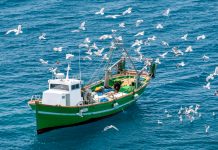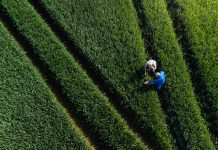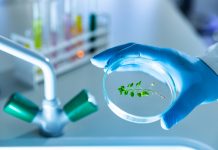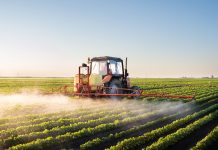David Green, Executive Director of the U.S. Sustainability Alliance, discusses sustainable food systems, mirror clauses and their meaning
Through summer and autumn, U.S. farmers will harvest their crops, many of which they will have produced using innovative technologies. At the same time, the European Commission is expected to propose its far-reaching sustainable food systems (SFS) regulation to legislate minimum sustainability requirements for products placed on the European Union (EU) market.
The SFS is one of many legislative initiatives resulting from the EU’s Green Deal and Farm to Fork (F2F) strategies. F2F’s objectives for 2030 are to reduce the use of chemical pesticides by 50%, fertilisers by 20%, and antibiotics by 50% while increasing organic production to 25% of total agricultural production. The green strategies
might call for a science-based approach and new production technologies. Still, experience in the EU shows that such technologies can run into political and societal challenges leading to non-scientific delays and even outright rejection. (1)
For EU farmers, the cuts in inputs without alternative production technologies mean facing an expected drop (2) of up to 20% in overall productivity and a corresponding reduction in quality. (3) This, in turn, would lead to increased imports from third countries, (4) including the U.S., to make up for the shortfall. Little wonder that U.S. farmers and others globally might relish the potential for increased exports while sympathising with their European counterparts. They might even scratch their heads and ask, “what exactly does Europe want and expect from its farmers?”
Profitability and sustainability
From a U.S. perspective, the EU’s regulatory approach to drive sustainable production comes across as prescriptive, heavily influenced by environmental and social pressures, with less attention given to the third leg of the ‘sustainability stool’ – economics. Yet, for farmers everywhere, being profitable goes hand in hand with the basic tenets of sustainability. The U.S. approach to agricultural sustainability is more focused on voluntary initiatives and market-based approaches, such as incentivising farmers to adopt sustainable practices through conservation programmes.
This is not to say that there is no regulatory oversight since there are some 20 U.S. federal laws and policies governing conservation, the environment, and the protection of waterways.
Mirror clauses concern EU trading partners
How the EU develops its approach to sustainable production within its borders is a matter for its legislators, regulators, producers, and consumers. However, the F2F strategy made it clear that it sees its approach as setting the global standard for sustainability. The EU’s attempts to impose so-called mirror clauses, which would require agriculture imports to meet EU standards, not only for food safety (already needed) but also for animal welfare and environmental protection, have increased concerns (5) among trading partners that Europe is trying to dictate its policy unilaterally.
Achieving agricultural sustainability requires a multi- faceted approach that includes regulations and voluntary standards. Each has strengths and weaknesses, but they are complementary in promoting sustainability.
War exposes vulnerabilities in the global food system
The war in Ukraine threw into sharp relief the fragility of global agricultural production and trade, particularly in Europe, where the aspirations of the Green Deal came up against the hard reality of food security. As a result, implementing the F2F strategy is receiving increasing pushback (6) from EU politicians, farm groups, and even regulators. The conflict also showed the interdependency of achieving food security. It highlighted a need for flexibility and understanding in accommodating local ambitions alongside various geo-political contexts and contrasting food production systems.
Sustainable productivity growth coalition
In late 2021, U.S. Agriculture Secretary Tom Vilsack launched the Coalition on Sustainable Growth Productivity (SPG) (7) with the underlying message calling for countries to take a global approach to bolster “sustainable productivity growth” and to “guard against trade barriers that discriminate against particular production practices even when the system is delivering positive outcomes.”
Interestingly, the EU joined the SPG Coalition the following March (2022). Perhaps, having looked in the mirror, the EU appreciates the need for more flexibility to meet the requirements of a global approach to tackling how to produce food sustainably and feed a growing world population.
An overview of the EU’s Farm to Fork strategy at a glance
The EU’s Farm to Fork Strategy forms a key part of the European Green Deal and aims to make food systems fairer, more sustainable, and healthier for people and the planet. It plans to accelerate this transformation by harnessing new technologies and scientific discoveries, working collaboratively with key stakeholders, and improving public awareness of food systems.
Key objectives include:
- a neutral or positive environmental impact;
- helping to mitigate climate change and adapt to its impacts;
- reversing the loss of biodiversity;
- ensuring food security, nutrition, and public health, making sure that everyone has access to sufficient, safe, nutritious, sustainable food; and
- preserving affordability of food while generating fairer economic returns, fostering competitiveness of the EU supply sector and promoting fair trade.
Speaking to Open Access Government in 2021, Claire Bury, Directorate-General for Health and Food Safety, said the Farm to Fork strategy alongside the Biodiversity strategy “set concrete and measurable targets, which include reducing the risk and use of pesticides and antimicrobials by 50%, reducing nutrient losses and increasing the share of organic agriculture to 25%, all by the year 2030. The EU is working to do this hand-in-hand with stakeholders, ensuring that all the necessary support to achieve these ambitious targets is given.
“As well as these targets, the Farm to Fork Strategy puts forward a list of 27 EU-level actions to spearhead our progress towards sustainable food systems. These range from food labelling, food waste, animal welfare and promoting the global transition.” (8)
Ambitious legislative framework on sustainable food systems to be introduced in late 2023
To ensure a more robust reformation of the EU’s food system and integrate sustainability in food-related policies, the Commission announced an ambitious legislative framework comprising the sustainability labelling framework, which they initially planned to introduce in late 2023. However, this has been met with backlash from some EU officials, politicians, and farmers, who feel other matters, such as food security, should be central to future legislation.
With European-wide elections due to take place in spring of next year, advocates are eager for proposed programmes from the Strategy to be codified into legislation. However, the EU’s progress towards meeting its green targets will likely be at risk due to the huge resistance from farmers.
References
- EU’s refusal to permit GMO crops led to millions of tonnes of additional CO2, scientists reveal – Alliance for Science
- USDA ERS – Economic and Food Security Impacts of Agricultural Input Reduction Under the European Union Green Deal’s Farm to Fork and Biodiversity Strategies
- Microsoft Word – Gutachten PS_Kurzfassung.docx] [bauernverband.de
- https://edepot.wur.nl/558517
- From farm to flop? Political risks choke EU’s green food plan – POLITICO
- Macron’s calls for “regulatory pause” in EU environmental laws wink at conservatives – POLITICO
- Sustainable Productivity Growth Coalition | USDA
- https://www.openaccessgovernment.org/farm-to-fork-more-sustainable-healthier-food/105521/


